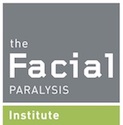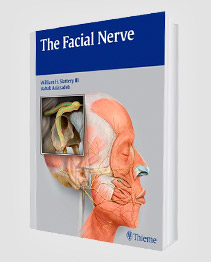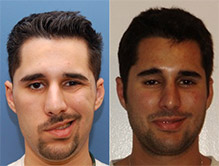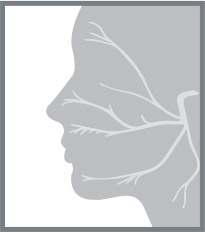Lyme disease is an infectious disease that occurs due to a bite from a blacklegged tick infected with Borrelia burgdorferi or Borrelia mayonii bacteria. The U.S. Centers for Disease Control and Prevention (CDC) notes approximately 30,000 Lyme disease cases are reported annually. Yet, some experts estimate roughly 476,000 people experience Lyme disease in the United States each year.
Meanwhile, the endemic areas for Lyme disease infections in the United States are in the northeast, north-central, and western portions of the country. But it also is important to note that people across the United States are susceptible to Lyme disease. Once a person gets bit by an infected tick, myriad Lyme disease symptoms can occur.
Lyme disease can cause fever, headache, fatigue, and other physical symptoms. In some instances, Lyme disease can result in facial weakness or paralysis as well.
Can Lyme Disease Cause Facial Paralysis?
The bacteria linked to Lyme disease can cause joint and nerve system damage. It can also impact the facial nerve and lead to facial paralysis symptoms.
When the facial nerve is damaged, facial weakness can occur. If left untreated, facial nerve damage can escalate, to the point where a patient may experience severe facial palsy on one or both sides of the face.
Facial weakness or paralysis must be treated immediately to minimize the risk of long-lasting side effects. At the first sign of facial paralysis symptoms, it is crucial to go to a doctor. At this time, a doctor can determine if a patient is dealing with facial paralysis and/or Lyme disease and treat one or both conditions.
Lyme Disease Facial Paralysis: Here’s What You Need to Know
Research indicates that approximately 5% of patients diagnosed with Lyme disease experience some form of facial weakness on one or both sides of the face. In certain cases, Lyme disease and Bell’s palsy occur at the same time, and it becomes difficult for a patient to smile, frown, or make other natural facial expressions.
Along with facial paralysis, Lyme disease can cause a wide range of physical symptoms, including:
- Muscle and joint aches
- Swollen lymph nodes
- Stiff neck
- Chronic fatigue syndrome
- Fibromyalgia
- Heart palpitations
- Persistent numbness, pain, and/or tingling of the hands and/or feet
The symptoms of facial paralysis and Bell’s palsy may start to affect a patient within seven to 21 days of initial infection. Fortunately, with proper treatment, a patient can quickly and safely address their infectious disease symptoms.
Lyme Disease and Bell’s Palsy Diagnosis
Laboratory tests are commonly used to diagnose Lyme disease. These tests require a blood sample from a patient.
Initially, a blood test is taken to determine if a patient is dealing with Lyme disease. If a patient tests negative for Lyme disease, no further testing is required. However, if a patient tests positive or the initial test results are unclear, a second test is used to verify Lyme disease is present.
Lab tests are also used to diagnose Bell’s palsy or other forms of facial paralysis. A neurologic and ear, nose, and throat evaluation are also performed. Other tests that may be completed include a test of a patient’s ability to produce tears, computed tomography (CT) scan, magnetic resonance imaging (MRI) exam, and electromyography or electroneurography (ENoG).
Comprehensive testing is key to accurately diagnose Lyme disease and Bell’s palsy. These conditions can occur in combination with one another or separately, and testing ensures a patient can find out if one or both are present. Following testing, a patient can pursue treatment options that deliver long-lasting symptomatic relief.
Are There Different Lyme Disease Bell’s Palsy and Facial Paralysis Symptoms?
A common symptom of Lyme disease that causes Bell’s palsy is weakness on one side of the face. Comparatively, Lyme disease related to facial paralysis can result in weakness on one or both sides of the face.
Also, Lyme disease linked to facial paralysis can cause fever, chills, neck stiffness, and other flu-like symptoms. On the other hand, Lyme disease related to Bell’s palsy is unlikely to cause any of these symptoms.
Lyme Disease and Facial Nerve Palsy Treatment
Lyme disease Bell’s palsy treatment sometimes requires the use of antibiotics. With corticosteroids, antivirals, and other antibiotics, a patient may be able to treat acute Lyme disease facial paralysis symptoms before they cause long-lasting harm.
Other treatments that may be used to treat Lyme disease facial palsy include Botox or surgery. To determine the best course of action, it is essential to meet with a doctor. This allows a patient to receive a full medical assessment to find out if he or she is dealing with Lyme disease, then explore various treatment options.
Lyme Paralysis Recovery
Antibiotics can drive Lyme paralysis recovery. And, there are additional measures to support recovery from Lyme disease, including:
- Maintain a healthy diet
- Get sufficient rest
- Exercise at least three days a week for a minimum of 30 minutes every day
A patient typically regains facial function within about three to four months of Lyme disease treatment. Some patients require up to 18 months before they begin to see any signs of recovery.
Gradually, a patient coping with facial paralysis due to Lyme disease recovers lost facial tone and movement during recovery. Some patients may experience permanent facial muscle tightness, involuntary facial movements, or related problems due to Lyme disease. In these instances, additional treatments may be required.
Lyme Disease Bell’s Palsy and Facial Paralysis: What Is the Best Treatment Option?
There may be times when Lyme disease occurs due to a bacterial infection that can be treated with antibiotics. Or, there may be instances when other treatment options are required to address a patient’s symptoms. Regardless, testing is necessary to ensure a patient can receive an accurate Lyme disease diagnosis. From here, a doctor can identify a safe, effective treatment designed to deliver long-lasting symptomatic relief.
Appropriate treatment for Lyme disease Bell’s palsy or other facial palsy symptoms is crucial. In one study, researchers found patients dealing with Lyme disease-related facial palsy faced a higher risk of severe long-term outcomes when treated using the same regimen as Bell’s palsy patients.
Those who experience facial paralysis symptoms should consult with a doctor immediately. At this time, a doctor can determine if these symptoms are related to facial paralysis. The doctor also can find out if a patient is coping with Bell’s palsy or facial palsy and treat the condition accordingly.
Schedule a Lyme Disease and Bell’s Palsy Treatment Consultation with Dr. Azizzadeh
Dr. Babak Azizzadeh of The Facial Paralysis Institute is a globally recognized facial plastic and reconstructive surgeon who helps patients dealing with long-term facial paralysis related to Lyme disease. He is happy to explore treatment options to help a Lyme disease patient achieve long-lasting relief from their facial paralysis symptoms. To schedule a consultation with Dr. Azizzadeh, please contact us online or call us today at (310) 657-2203.
Request your consultation with Dr. Azizzadeh today
Call us at (310) 657-2203 to schedule an appointment.
Schedule a Consultation




